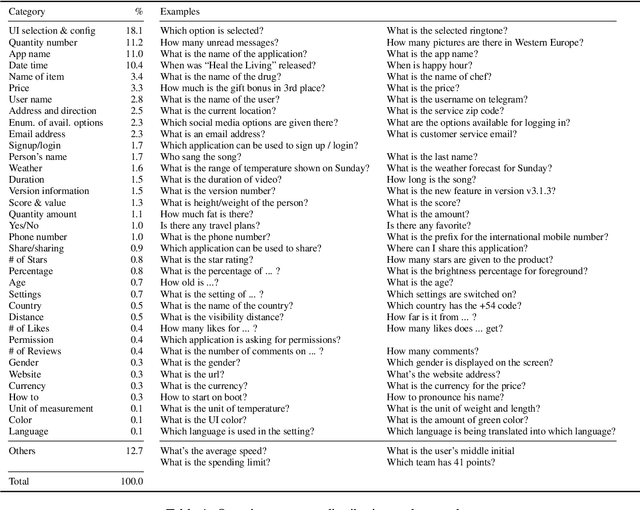Fedir Zubach
JD
ScreenAI: A Vision-Language Model for UI and Infographics Understanding
Feb 19, 2024



Abstract:Screen user interfaces (UIs) and infographics, sharing similar visual language and design principles, play important roles in human communication and human-machine interaction. We introduce ScreenAI, a vision-language model that specializes in UI and infographics understanding. Our model improves upon the PaLI architecture with the flexible patching strategy of pix2struct and is trained on a unique mixture of datasets. At the heart of this mixture is a novel screen annotation task in which the model has to identify the type and location of UI elements. We use these text annotations to describe screens to Large Language Models and automatically generate question-answering (QA), UI navigation, and summarization training datasets at scale. We run ablation studies to demonstrate the impact of these design choices. At only 5B parameters, ScreenAI achieves new state-of-the-artresults on UI- and infographics-based tasks (Multi-page DocVQA, WebSRC, MoTIF and Widget Captioning), and new best-in-class performance on others (Chart QA, DocVQA, and InfographicVQA) compared to models of similar size. Finally, we release three new datasets: one focused on the screen annotation task and two others focused on question answering.
ScreenQA: Large-Scale Question-Answer Pairs over Mobile App Screenshots
Sep 16, 2022



Abstract:We present a new task and dataset, ScreenQA, for screen content understanding via question answering. The existing screen datasets are focused either on structure and component-level understanding, or on a much higher-level composite task such as navigation and task completion. We attempt to bridge the gap between these two by annotating 80,000+ question-answer pairs over the RICO dataset in hope to benchmark the screen reading comprehension capacity.
 Add to Chrome
Add to Chrome Add to Firefox
Add to Firefox Add to Edge
Add to Edge